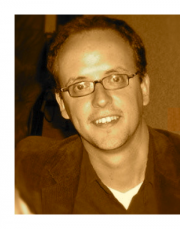
Why the Public Uses Social Media During Disasters (and Why Some Don’t)
The University of Maryland has just published an important report on “Social Media Use During Disasters: A Review of the Knowledge Base and Gaps” (PDF). The report summarizes what is empirically known and yet to be determined about social media use pertaining to disasters. The research found that members of the public use social media for many different reasons during disasters:
- Because of convenience
- Based on social norms
- Based on personal recommendations
- For humor & levity
- For information seeking
- For timely information
- For unfiltered information
- To determine disaster magnitude
- To check in with family & friends
- To self-mobilize
- To maintain a sense of community
- To seek emotional support & healing
Conversely, the research also identified reasons why some hesitate to use social media during disasters: (1) privacy and security fears, (2) accuracy concerns, (3) access issues, and (4) knowledge deficiencies. By the latter they mean the lack of knowledge on how to use social media prior to disasters. While these hurdles present important challenges they are far from being insurmountable. Educa-tion, awareness-raising, improving technology access, etc., are all policies that can address the stated constraints. In terms of accuracy, a number of advanced computing research centers such as QCRI are developing methodologies and pro-cesses to quantify credibility on social media. Seasoned journalists have also been developing strategies to verify crowdsourced information on social media.
Perhaps the biggest challenge is privacy, security and ethics. Perhaps the new mathematical technique, “differential privacy,” may provide the necessary break-through to tackle the privacy/security challenge. Scientific American writes that differential privacy “allows for the release of data while meeting a high standard for privacy protection. A differentially private data release algorithm allows researchers to ask practically any question about a database of sensitive informa-tion and provides answers that have been ‘blurred’ so that they reveal virtually nothing about any individual’s data—not even whether the individual was in the database in the first place.”
The approach has already been used in a real-world applications: a Census Bureau project called OnTheMap, “which gives researchers access to agency data. Also, differential privacy researchers have fielded preliminary inquiries from Facebook and the federally funded iDASH center at the University of California, San Diego, whose mandate in large part is to find ways for researchers to share biomedical data without compromising privacy.” So potential solutions are al-ready on the horizon and more research is on the way. This doesn’t mean there are no challenges left. There will absolutely be more. But the point I want to drive home is that we are not completely helpless in the face of these challenges.
The Report concludes with the following questions, which are yet to be answered:
- What, if any, unique roles do various social media play for commu-nication during disasters?
- Are some functions that social media perform during disasters more important than others?
- To what extent can the current body of research be generalized to the U.S. population?
- To what extent can the research on social media use during a specific disaster type, such as hurricanes, be generalized to another disaster type, such as terrorism?
Have any thoughts on what the answers might be and why? If so, feel free to add them in the comments section below. Incidentally, some of these questions could make for strong graduate theses and doctoral dissertations. To learn more about what people actually tweet during this disasters, see these findings here.
Phi Beta Iota: In conceptualizing the Smart Nation Act when Congressman Rob Simmons (R-CT-02) was on the Homeland Security Committee in the House of Representatives, $30 million per year per state was added to the Open Source Agency (OSA) budget at FOC to fund citizen community information-sharing and sense-making networks, including a 24/7 state-wide watch center manned by the National Guard (both law enforcement commissions and national foreign intelligence clearances), and both a 114 and a 119 number were conceptualized. The 114 would send an immediate alert of text, photo, or audio of a suspicious activity, to the nearest police precinct; the 119 alert would be immediately rebroadcast to every cell phone within a 500 meter or greater radius. The Department of Homeland Security has turned into a massive pork pie that is grotersquely inappropriate to our needs–its Joint Fusion Centers are worthless precisely because it ignored the emphasis that Simmons and Steele were putting on bottom-up dots, and it refused to actually think about what was needed at local levels, preferrring instead to mandate idiocy (such as SWAT Teams) in every county. Corruption, in any form, is toxic. DHS exceeds the toxicity of the Pentagon for one major reason: we need 50% of what the Pentagon is paid to do; we need less than 20% of what DHS is paid to do.
See Also:
Open Source Agency Executive Access Point



